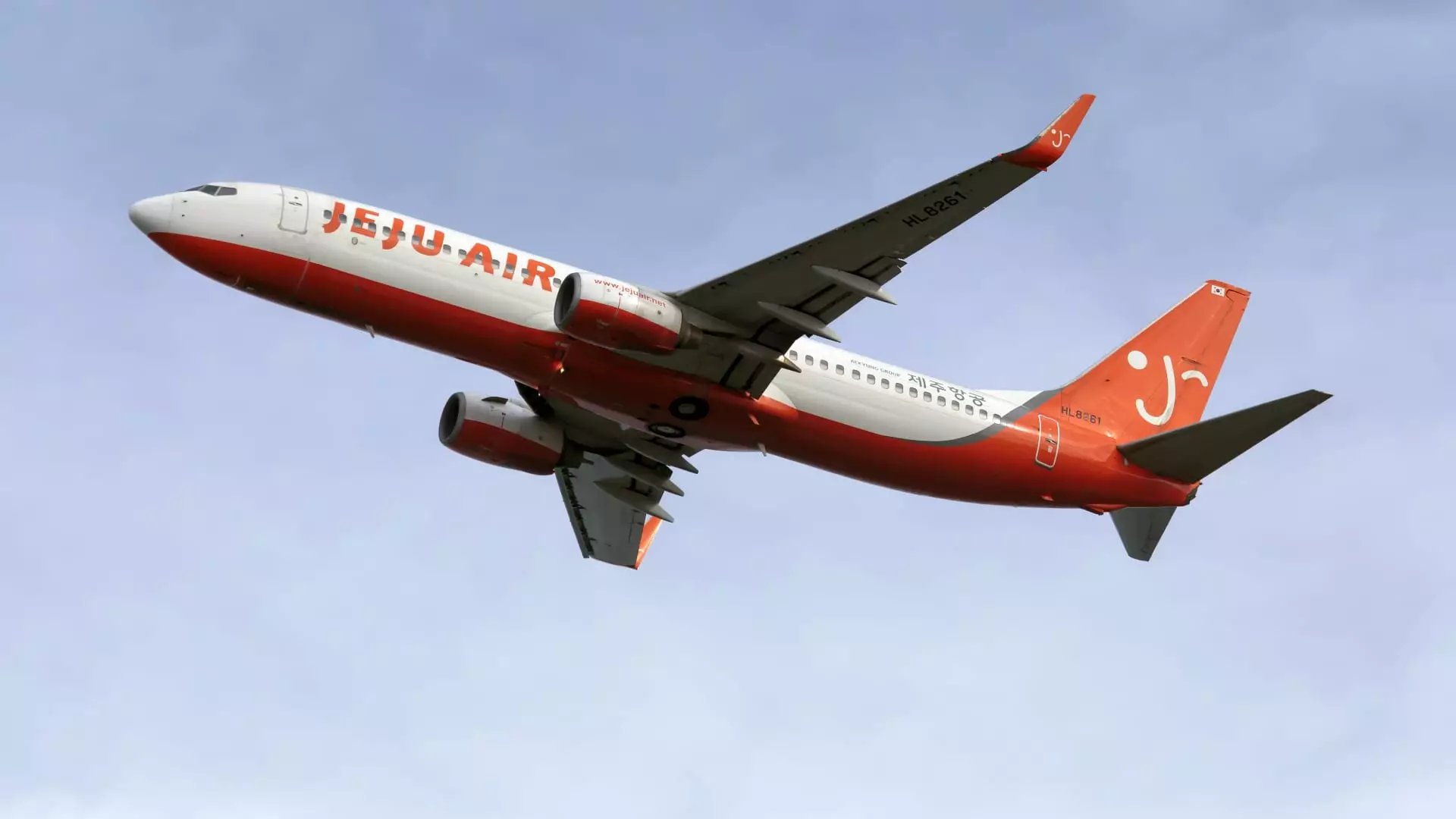On a fateful day at Muan International Airport, South Korea, a routine flight became a scene of chaos and devastation when a Jeju Air flight, designated as 7C2216, was forced to belly land without its landing gear engaged. Tragically, 179 out of the 181 individuals on board lost their lives as the aircraft erupted into flames, marking this incident as one of the most catastrophic in South Korean aviation history in recent decades. The role of aviation safety and regulatory measures comes under significant scrutiny in the aftermath of such an event, especially given the frequency of the Boeing 737-800 model in commercial service worldwide.
In the wake of this tragedy, South Korea’s acting President Choi Sang-mok swiftly ordered an emergency inspection of all operational Boeing 737-800 planes in the nation. This immediate response underscores the urgency to ascertain the safety and operational integrity of a model that is often regarded as one of the most reliable in commercial aviation. These inspections were essential not only to reassure the public but also to support the investigation into the specific causes of this disaster.
A significant aspect of the ongoing inquiry revolves around the operational history of the Boeing 737-800, which boasts a strong safety record and is one of the most widely utilized aircraft globally. With around 4,400 of this model in service, comprising approximately 17% of the commercial jet fleet, scrutiny of its safety protocols and mechanical reliability has become paramount.
The particular aircraft involved in the incident was approximately 15 years old at the time of the accident and had previously been in service with Ryanair before being acquired by Jeju Air in 2017. While the average age of the Boeing 737-800 fleet is around 13 years, the longevity and extensive use of this particular plane raises questions about issues that may develop over time, including maintenance practices and operational protocols that might have been overlooked.
Despite concerns, experts assert that the probability of uncovering a design flaw in the aging aircraft is exceedingly low. Richard Aboulafia from AeroDynamic Advisory stated that finding a systematic issue is “borderline inconceivable” given the model’s long operational history and track record. This highlights a critical gap in accident investigations, which often uncover unexpected maintenance failures rather than design issues with well-established models.
As investigators delve deeper into the specifics of the crash, multiple hypotheses arise regarding the failure to deploy the landing gear. The Boeing 737-800 is designed to allow pilots to manually release the landing gear in the event of a malfunction. This leads to a fundamental question: what prevented the crew from executing this crucial step? One theory posits that a bird strike could have led to engine failure, leaving the pilots with little time to react and execute emergency checklists.
Jeff Guzzetti, an experienced air safety investigator, pointed out that had the aircraft not concluded its flight with a collision against a hard structure at the end of the runway, the consequences may have been less dire. This assertion indicates that the nature of the crash landing—specifically the terrain and obstacles involved—played a pivotal role in the tragic outcome.
The investigation is being led by the National Transportation Safety Board (NTSB) from the United States, with participation from Boeing and the Federal Aviation Administration (FAA), given that the aircraft was manufactured and certified in the U.S. This collaboration between international safety bodies exemplifies the global nature of aviation and the shared responsibility among nations to maintain stringent safety standards.
Under international protocols, the country of the incident’s occurrence leads the investigation. However, the complexities surrounding the involvement of inspection and safety authorities from other nations reflect an integrated approach towards aviation safety, particularly in the scrutiny of the maintenance records and operational behaviors of carriers involved in such incidents.
The Jeju Air Flight 7C2216 tragedy serves as a stark reminder of the potential perils that exist within commercial aviation, even with a highly regarded aircraft like the Boeing 737-800. As investigators seek answers, the global aviation community must reflect on lessons learned and strive to enhance safety measures, upgrade protocols, and ensure the reliability of the fleet, thereby preventing such tragedies from occurring in the future. The investigation may take time, but the primary goal remains clear: to improve aviation safety and protect lives.

Leave a Reply